|
|
Nokia: Go Play – new horizons from Nokia
At two press-conferences held in China and the UK simultaneously, Nokia disclosed its vision of the gaming elements in multimedia devices that are to come in the near term. The announcement of N-Gage platform and its second iteration have been anticipated since the end of 2006 – the company did nothing to disguise its plans. The Web has been buzzing with the description of gaming services, as well as the N-Gage application window, revamped animated logo and the lowdown on the concept itself. In fact, everything you needed to know about the N-Gage was available long before the official introduction. Occasionally the company would spark new waves of craze by proclaiming cooperation with some developers.
Why does the gaming market mean so much for mobile terminal manufactures today? Let’s look at the major lines of development in the industry and see which niches still have no tough competition. Starting from 2004 the companies have been into music, with the birth of Walkman brand, this market made the statement, so now all top manufacturers are fighting for a chunk of the pie. The question of whether a music-minded handset can serve as a replacement for a stand-alone player has been decided in favor of handsets by many, which is quite an achievement already. Another guideline for mobile devices has been digital photography. This market emerged shortly before cameras made it to phones, which allowed them to develop at roughly equal pace. While first adopters had taken inbuilt cameras with a pinch of salt for their poor quality, they had nowhere to run when first 2 Mpix units with fairly good picture quality arrived. So these days, wherever you are, you can run into tourists using their handsets rather than digital compacts to take snaps.

Music and imaging are more of entertainment, and find little application in hands of enterprise users during their routine. At the same time, this audience vitally needs a bevy of connectivity options, mobile mail features, and ability to browse web resources. In today’s mobile phones web-browsing is, well, the third most important constituent of a convergent device.
If you give the market of PC solutions a once-over and pay special attention to the youth, there will be another need - games. People like to keep themselves entertained, and video games are an integral part of this trend. So, why don’t they bring this to mobile mobiles? The debut of the N-Gage wasn’t all sunshine and rainbows – the manufacturer tried to come up with a stand-lone platform with closed standard of games, separate cartridges, which brought about the problem of logistics, manufacturing etc. It would have been much more interesting to see a standard platform and standard ways of software distribution. But back then the gaming experience was held back by display quality and sound performance of handsets – during the time span separating two iterations of the N-Gage, the multimedia department of smartphone has evolved, so now they can make a good gaming platform. The market is also going through the peak of gaming consoles popularity (such as the Sony PSP). Which means the market is now ready for the advent of a gaming platform crossed with a handset. Nokia has picked the right moment to present the N-Gage’s second edition, with all factors producing synergy effect. The users already have the experience of using their phones in ways different from the original purpose of the phone to, so this will be nothing new to them.
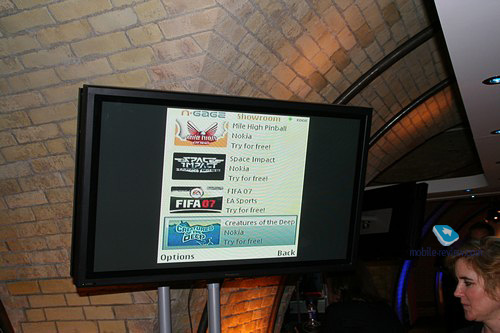
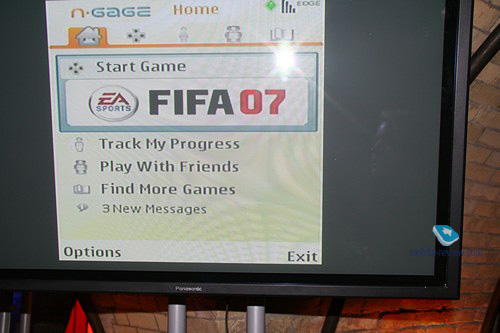
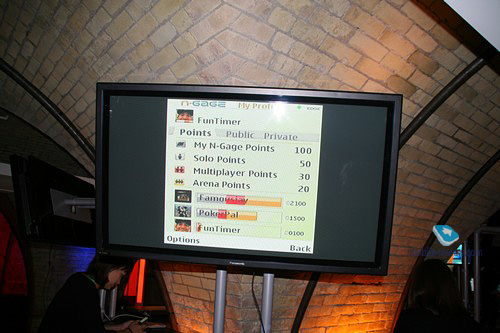
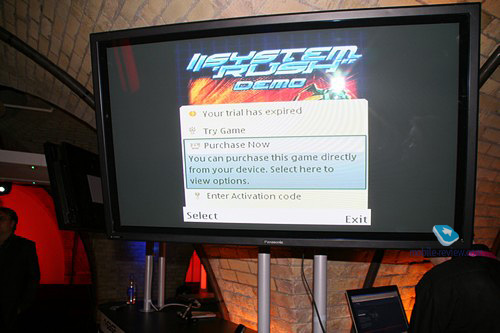
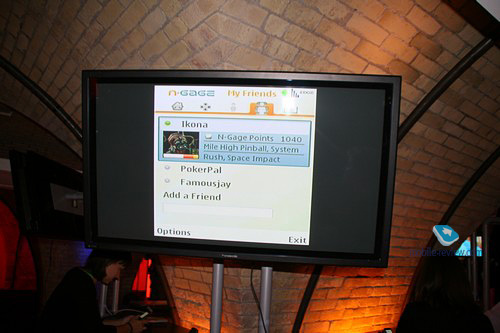
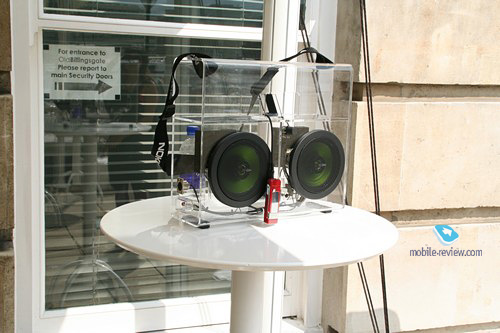
Nokia in London
Already at the entrance our procession was met by a group of animators with a tape recorder made of two plexiglass parts, speakers and the Nokia N76 put inside. A quirky design, but it delivers the message – nobody has ever tried to materialize the music department in such manner, and this attempt looks pretty good.
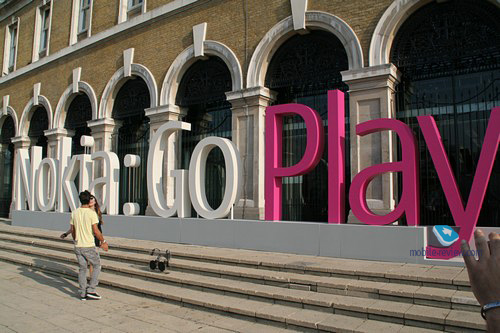

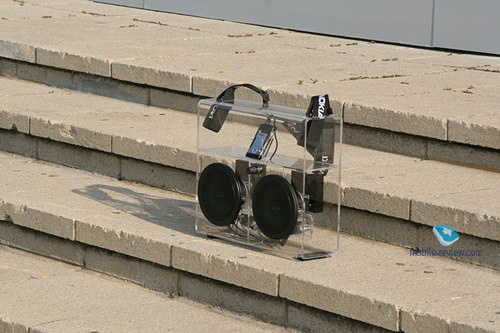
At the presentation Olli-Pekka Kallasvuo talked a lot about the company’s origins, its achievements and the past. But the core idea was Nokia’s aim to come up with different services for the users, as the company has an obvious edge over the competition and a legion of loyal users of Nokia-branded handsets. These days it is the number of users that defines which way a new service goes – up the charts or down below. A solid idea isn’t enough anymore – you should be able to convey it to a broader audience. This is not always possible, and occasionally you can’t do this quickly enough. For Nokia, the problem of a target audience takes a back seat – this is the company’s cutting edge.
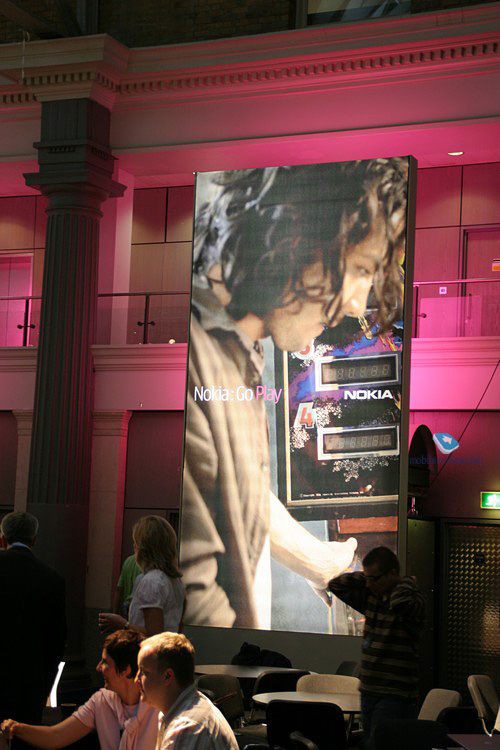
The idea behind the presentation was the company’s commitment to creation of brand-new services and coupling them with new products. For this they have designed a new interface and offered a bunch of fresh solutions. All multimedia features are now crammed into one applications with N-Gage’s own section inside, music tab with access to Nokia’s music store and all local files. Other types of multimedia content are also available from here, for example images, which are viewed pretty much in the same way as with the Apple iPhone, where you can skim through your image library right on the display and have them automatically rotated depending on the phone’s orientation. As a matter of fact, the best thing about the iPhone has become par for the course in most Nokia-branded multimedia-ready products. A separate section houses TV, video and the like.
In a way this design resembles the multimedia menu found in A200 platform from Sony Ericsson, specifically in the Sony Ericsson K850i.
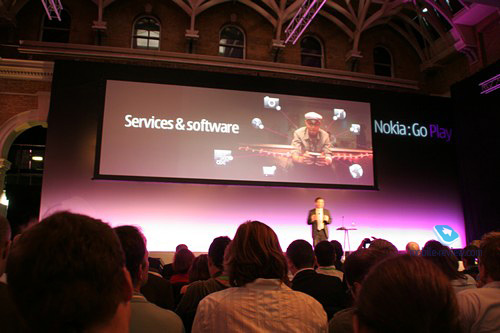
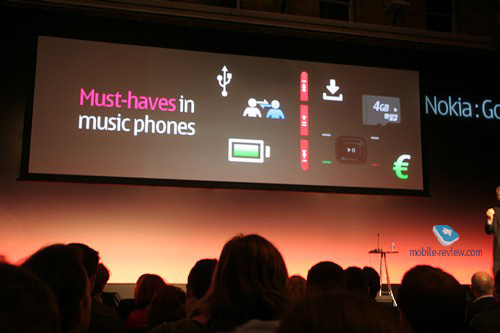
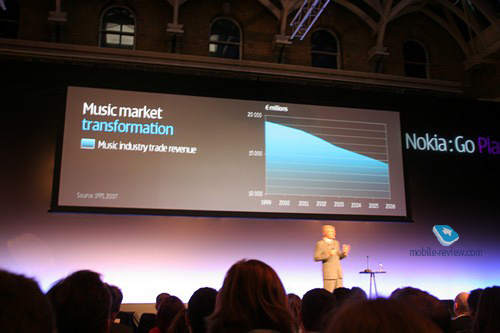
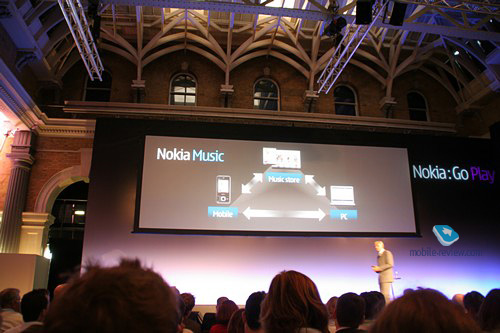
The company predicts the number of convergent devices to make 120 mln. units in 2007, while a year before this figure was much smaller – 80 mln. (sales per year). As we see, this market is thriving, but it is only the beginning. Nokia intends to grab the leadership on this market on all fronts. Everyone knows that the sales of music have been growing thin of late, and the record labels can’t withstand competition from the online distributors and all that music available on the web. The advent of mp3 and other digital audio formats technically marks the decline in sales of conventional recording mediums. It is not only Nokia - other companies also ñonsider this way of offering digital music for purchase from portable devices, as this will support the industry and give the users even more freedom. As the company suggests, mobile phones will get to be the main devices for listening to music already in 2008 and will stay this way hereafter. In a word, stand-alone devices such as mp3 players have already lost it to mobile phones, the revolution has already taken place. On top of that, the company wants to preserve the sound quality of stand-alone mp3 players, so as to keep everything going the same way for consumers.
In its XpressMusic line the company prioritizes a couple of crucial parameters: first, battery life in all models, this is the top-priority for Nokia. Also, the company thinks the user should be able to trade multimedia content back and forth in any manner – be it Bluetooth or email.
Also, Nokia has virtually announced its programme to create external accessories for its XpressMusic range. As it stands now, this line comprises Philips earphones, JBL speakers, and dock stations by a number of other makers. Nokia has definitely learned the lesson of its past failures; from now on the company doesn’t strive to be the only manufacturer of accessories, but instead invites other players to take part in this business. The example of the Apple iPod seems to be serving as the guideline and I’m positive Nokia will put it to better use. Apparently, all third-party makers will win from creation of a universe of various accessories for 300-400 mln. devices (pessimistically, for 100 mln. multimedia solutions). None of the other makers has a market with such an enormous potential that has yet to be manifested.
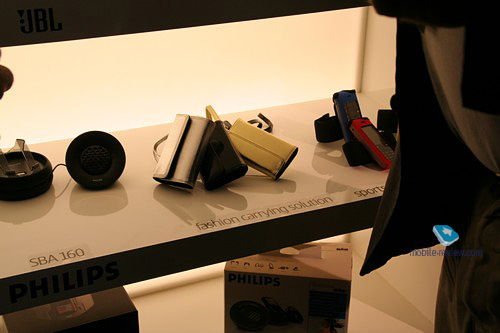
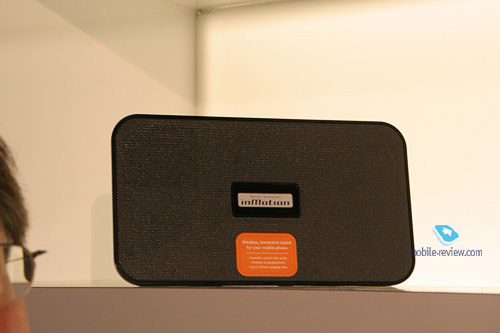
Another hyped announcement was the establishment of OVI brand – an umbrella band for various Nokia’s very own services such as Nokia Maps, N-Gage, Nokia Music and others. Basically with this they are gathering all applications in one software shell we wrote above. It is a good way to go, for it makes navigation in the raft of these apps so much easier for the end-user. The thing many have already overlooked is that OVI is not a purely smartphone/feature phone solution – it runs on PCs as well. Thus, it morphs into some sort of a door into the world of Nokia’s services.
Search application for S60
Search utility for S60 platform has been updated – now the application allows you to perform both local and web search. The developers saw integration with the already existing company’s services, like Nokia Maps, as their main task. With this app you can search data in your handset’s file system and in specific sections, like messages, phonebook, etc. Punching a contact’s name into the search line results not only in his number, but also all related messages, both SMS and email. What I really like, is that now, when searching in the Internet, you can add information to your phonebook, pinpoint a location on the map, or plot a route to this point from your current whereabouts. The application looks very sweet, and on top of that has no counterparts as of today. Until recently, Samsung’s MegaSearch could do roughly the same thing, but it lags behind this update functionality-wise.
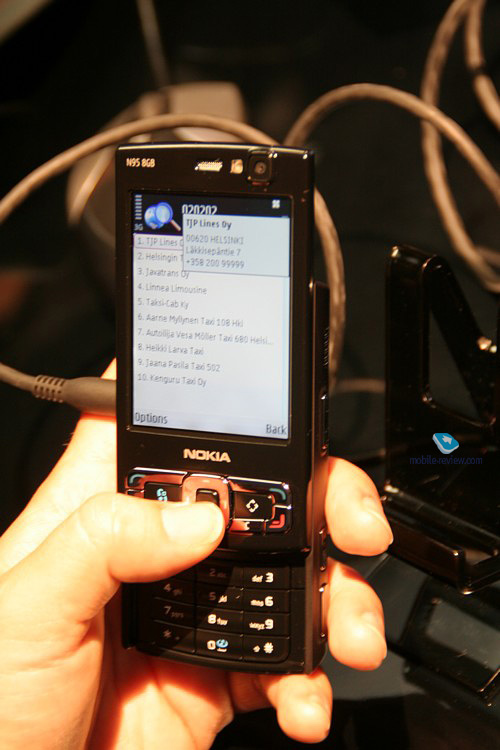
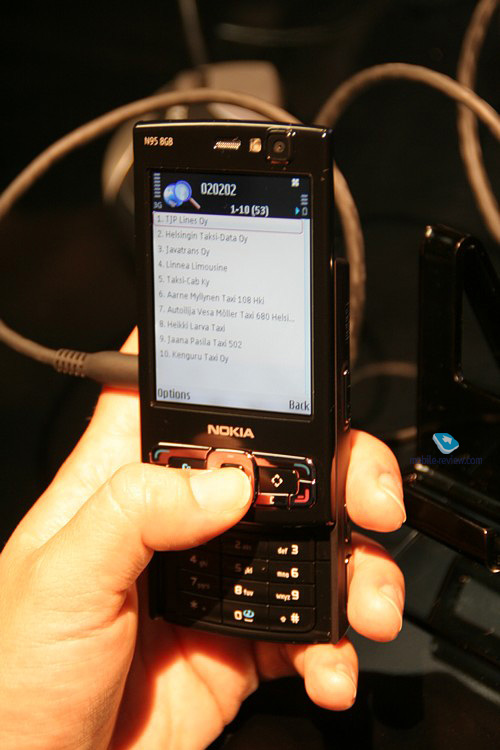
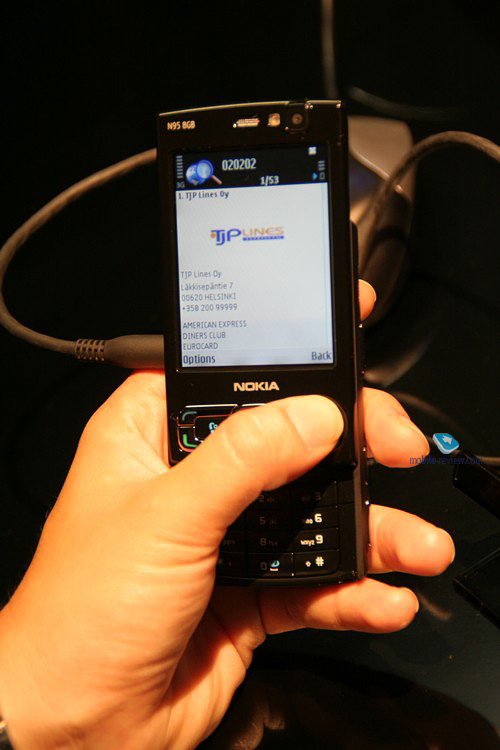
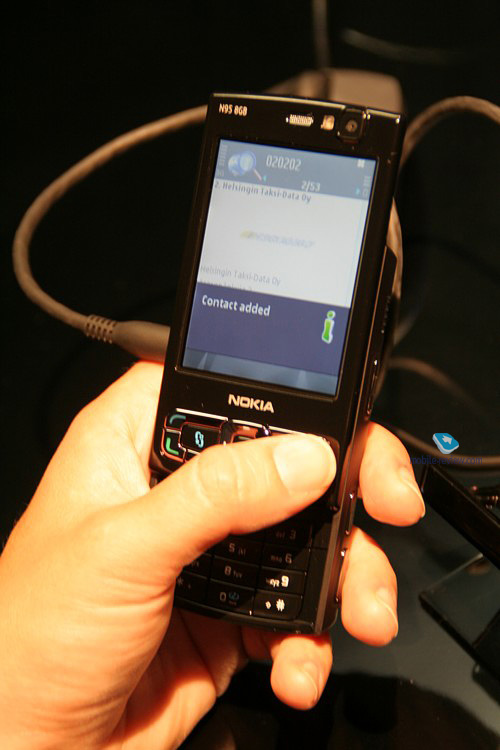
New Nokia’s offerings
Nokia 5310 – a moderately priced mid-tier model, coming with a 3,5 mm jack on the casing, microUSB, QVGA-display, running on S40 5th edition. The phone hits the shelves in November with the price tag of around 225 Euro.
All in all, there is nothing special about this device – conventional candy-bar form-factor, slender profile that feels good in hands. For a budget solution which can play music among other things, the 5310 does pretty well. Another thing of note is its remote control which comes in one box with the handset.
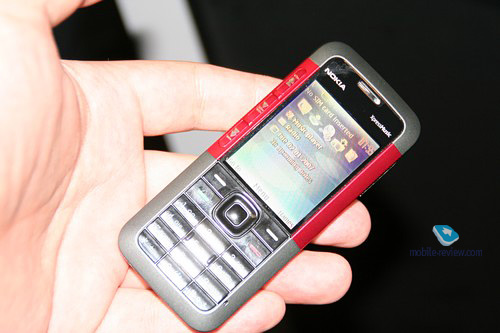
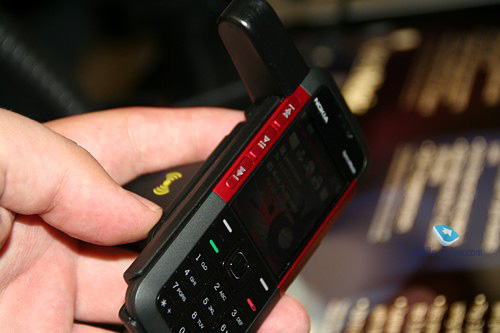
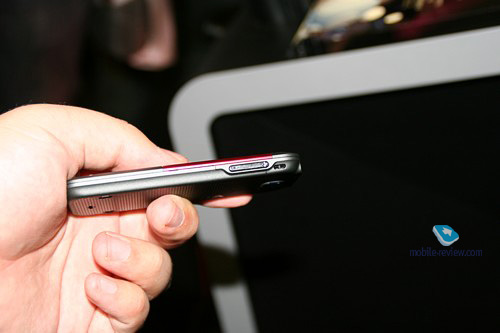

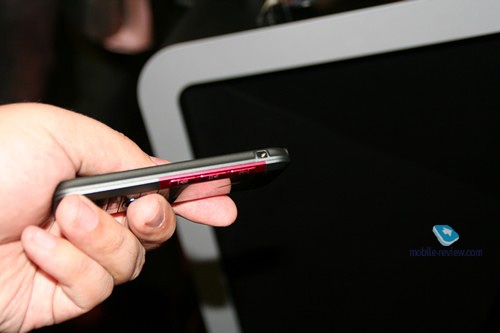
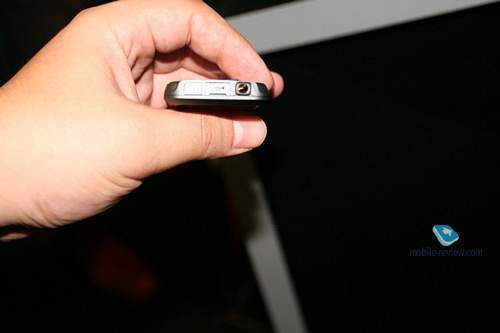
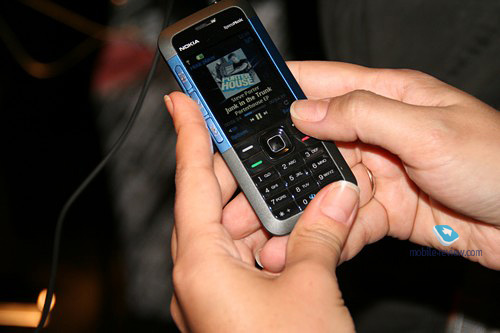
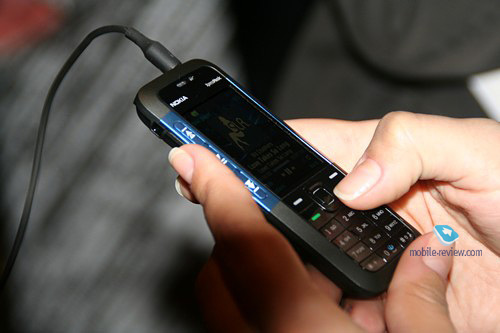
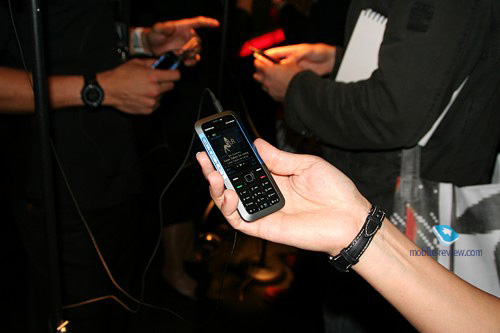
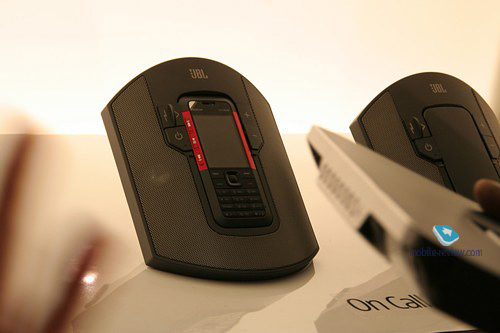
Nokia 5610 – slider-type handset with metal details and a novelty – a slider switch placed right below the display with whose help you can zip through the phone. (FM-radio, music – cyclic). The bundled 3,2 Mpix camera with flash and autofocus. The battery can play music for 22 without a break. When the 5610 starts shipping, which is November, it will go for about 300 Euro.
The Nokia 5610 sports a QVGA display, 240x320 pixels resolution 2,2-inch diagonal and S40 inside. With its smooth looks and nice feel it seems to be an adequate replacement for the Nokia 5300, so we can hope that its price will go all the way down really fast.
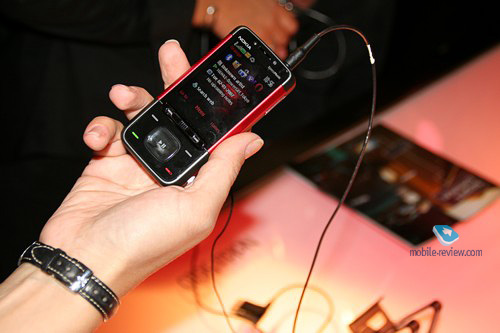
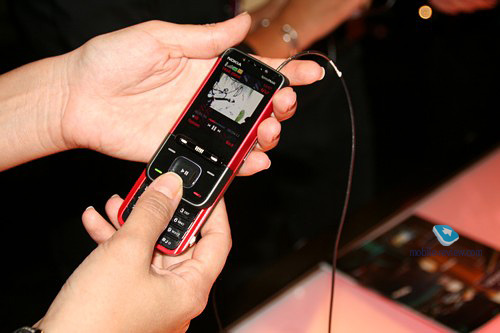
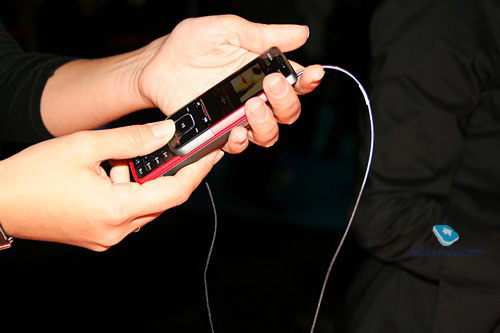
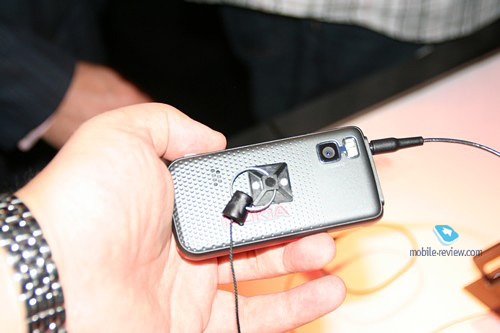
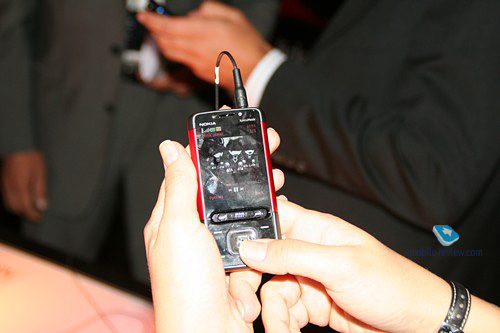
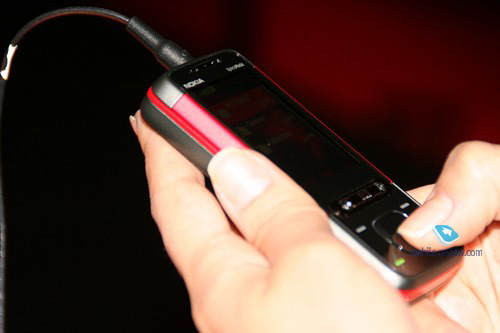
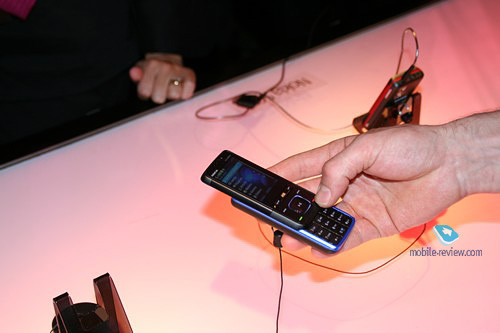
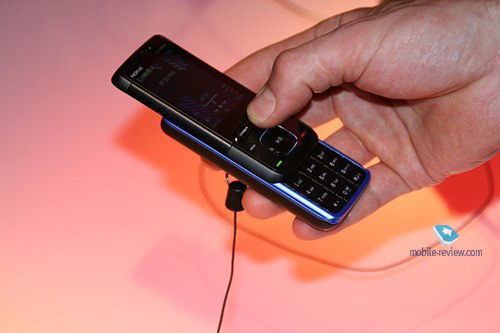
The Nokia N81. This is Nokia’s major announcement for today, and this phone comes in two editions -Nokia N81 and Nokia N81 8 Gb. The only difference between these two variations is the amount of bundled memory and the fact that the 8Gb version has no microSD memory expansion slot, and nor does the Nokia N95 8Gb. This slider measures Nokia’s typical 102x50x17.9 mm and weighs in at 140 grams. The N81 comes armed with microUSB socket, WiFi and runs the same platform as the Nokia N95. This is actually the prototype for the majority of Nokia’s S60-powered solutions, and there are several reasons for that. First off, it is a music-minded solution coming in with a remote control, 3,5 mm jack and a slightly revamped player. Its music department hasn’t picked up any notable enhancements, unless, of course, you deem access to Nokia Music Store an essential component.
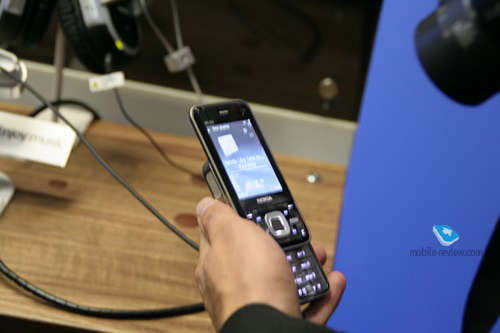
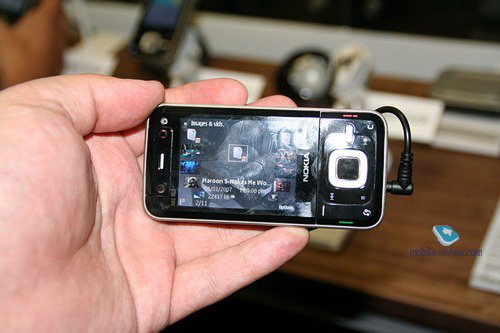
But N-Gage changes everything – previously only Sony Ericsson branded devices showed off A-B buttons for games, now Nokia’s devices have picked them up as well. As of today there are 17 games available for this platform, which all look pretty good, and, more importantly, they can help you kill some time with fun. And the truth is, none of the manufacturers has ever offered this many top-notch games for handsets. However the real N-Gage support is coming to this device, just like to the entire S60 platform, only in May, 2008 – before this moment, Nokia is not going to engage this service.
The built-in GPS-receiver is no different from the Nokia N95’s one, and with the price tag of 400-450 Euro, the N81 still manages to end up in a different league, which makes it a worthy purchase. Personally, I didn’t quite like the glossy plastic for its ability to attract grease, and the build quality of the prototypes causes certain concerns – some parts feel very fragile.
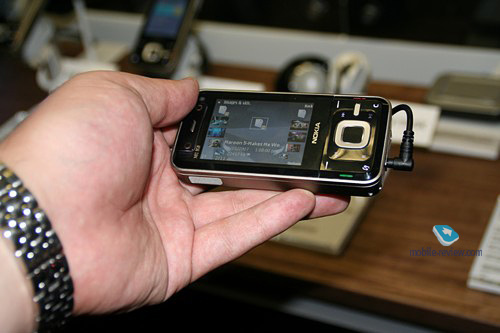
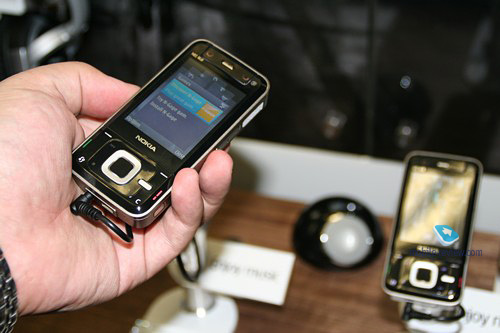
Also, Nokia has made a great move in the imaging department, specifically the way to view your snaps – now its handsets have the same trait that many loved in the iPhone. You can browse your library by dragging your finger across the display, and still get the pictures rotated automatically. One of the questions that came from the audience and highlighted the patent issue (whether Apple’s rights get insulted this way) was given a solid answer that this company didn’t own such patent. So, now the iPhone, in its European edition, doesn’t have much going for it.
This is the first device to house the revamped Navy Wheel – basically, it is a touch-sensitive pad, supporting not only diagonal swipes, but also complex patterns. This pad has allowed the company to set feedback in games the right way, as well as some other functions. To me, this is the right way to go, in some ways it is similar to the pad found in the Samsung F500.
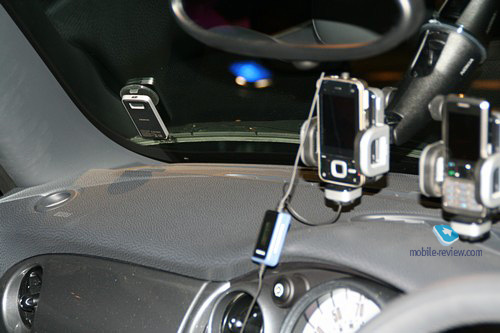
There is no doubt that the Nokia N81 will become a best-seller standing in one line with the company’s Nokia N95 – it has what it takes, even though the N81 couldn’t avoid certain flaws in design, but tastes differ, so that’s about it. They have put a 2 MPix camera module here on purpose – otherwise it would have been a direct rival to the Nokia N95.
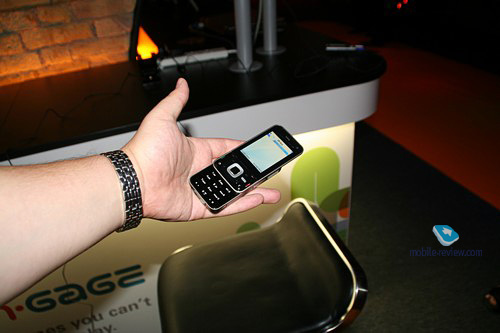
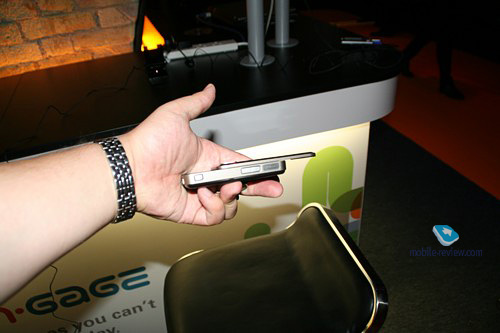
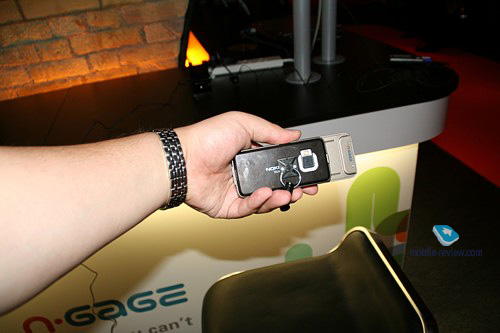
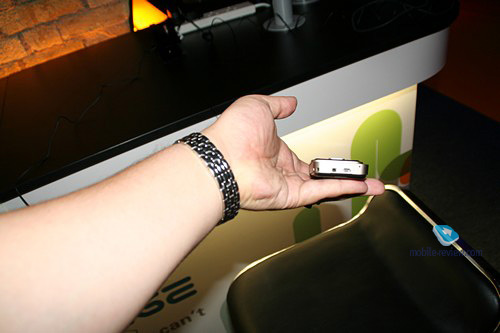
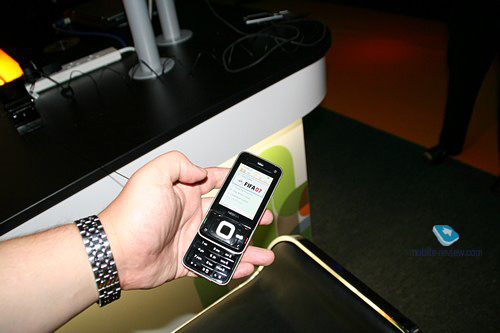
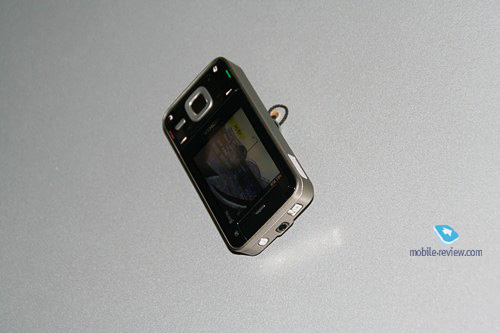
The Nokia N95 8Gb –update of the Nokia N95, with the memory expansion slot, slightly boosted display (now it measures 2,8 inches from corner to corner), yet will the same old QVGA resolution. Even though the company already has prototypes of this phone with VGA-enabled displays, it seems they will come along with the next update of the flagship. Technically this is the music edition of the Nokia N95 thanks to its increased internal storage volume. The firmware update will be up for grabs for the previous edition as well.
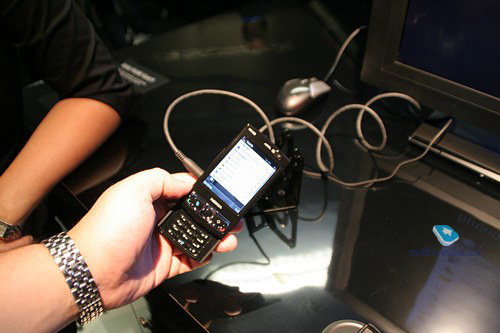
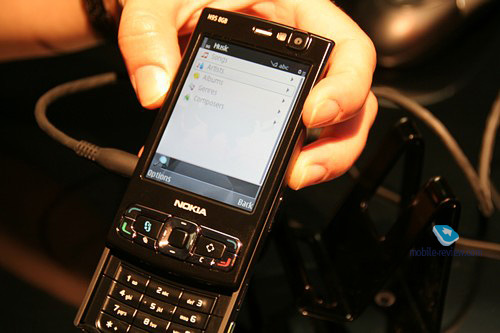
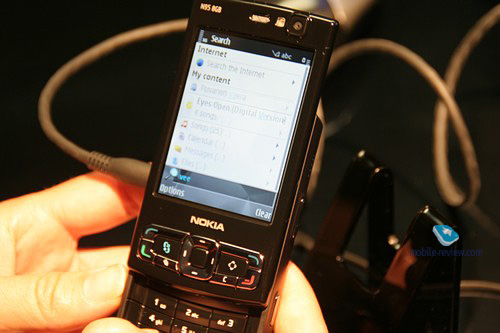
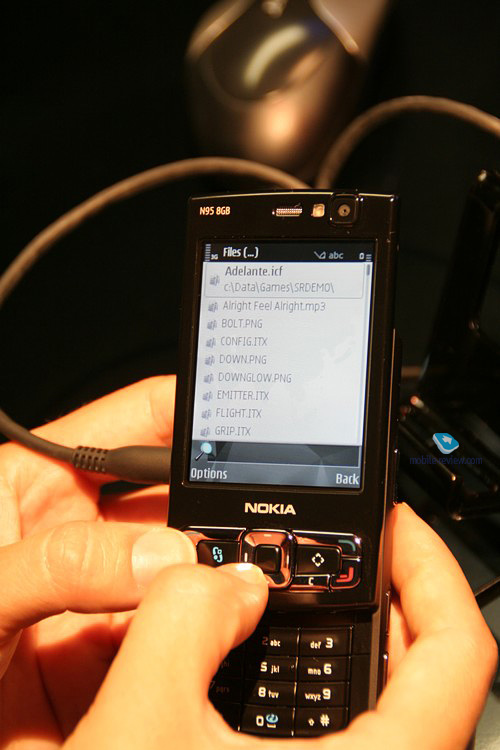
More info on Nokia’s market strategy will come next week in dedicated articles – there is a whole lot of new stuff, so stay tuned!
Eldar Murtazin ([email protected])
Translated by Oleg Kononosov ([email protected])
Published — 29 August 2006
Have something to add?! Write us... [email protected]
|
News:
[ 31-07 16:21 ]Sir Jony Ive: Apple Isn't In It For The Money
[ 31-07 13:34 ]Video: Nokia Designer Interviews
[ 31-07 13:10 ]RIM To Layoff 3,000 More Employees
[ 30-07 20:59 ]Video: iPhone 5 Housing Shown Off
[ 30-07 19:12 ]Android Fortunes Decline In U.S.
[ 25-07 16:18 ]Why Apple Is Suing Samsung?
[ 25-07 15:53 ]A Few Choice Quotes About Apple ... By Samsung
[ 23-07 20:25 ]Russian iOS Hacker Calls It A Day
[ 23-07 17:40 ]Video: It's Still Not Out, But Galaxy Note 10.1 Gets An Ad
[ 19-07 19:10 ]Another Loss For Nokia: $1 Billion Down In Q2
[ 19-07 17:22 ]British Judge Orders Apple To Run Ads Saying Samsung Did Not Copy Them
[ 19-07 16:57 ]iPhone 5 To Feature Nano-SIM Cards
[ 18-07 14:20 ]What The iPad Could Have Looked Like ...
[ 18-07 13:25 ]App Store Hack Is Still Going Strong Despite Apple's Best Efforts
[ 13-07 12:34 ]Infographic: The (Hypothetical) Sale Of RIM
[ 13-07 11:10 ]Video: iPhone Hacker Makes In-App Purchases Free
[ 12-07 19:50 ]iPhone 5 Images Leak Again
[ 12-07 17:51 ]Android Takes 50%+ Of U.S. And Europe
[ 11-07 16:02 ]Apple Involved In 60% Of Patent Suits
[ 11-07 13:14 ]Video: Kindle Fire Gets A Jelly Bean
Subscribe
|






















































